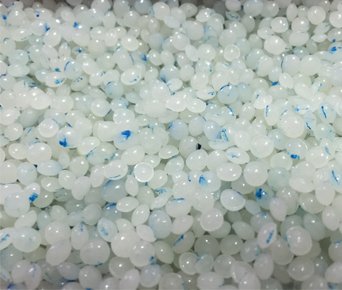In today's world, the production and recycling of plastic materials are vital to numerous industries. Among the essential tools used in these processes is the plastic granulator machine. This versatile piece of equipment plays a crucial role in recycling waste plastics into reusable materials and is indispensable in reducing environmental impact. In this article, we will explore the definition, components, operation, and applications of a plastic granulator machine while highlighting its importance in sustainable practices.
A plastic granulator machine is a device designed to cut, shred, and grind plastic materials into small, uniform granules or pellets. These granules can be reprocessed into new products or blended with virgin plastics for a range of manufacturing applications. Granulators are used in both industrial and commercial settings, offering an efficient solution for managing plastic waste.

A plastic granulator machine consists of several key components, each playing an integral role in its operation:
Hopper
The hopper is the entry point for feeding plastic materials into the granulator. It is typically designed to accommodate various shapes and sizes of plastics, from bottles to sheets.
Cutting Chamber
The cutting chamber houses the blades or knives that shred the plastic. This chamber is where the actual size reduction occurs, breaking down the material into smaller pieces.
Blades or Rotors
The granulator's blades, often made from hardened steel, perform the cutting action. Fixed blades work alongside rotating blades to achieve precise and efficient granulation.
Screen or Mesh
A screen or mesh is installed at the bottom of the cutting chamber to filter the granules. It ensures that only particles of the desired size pass through, while larger pieces are recirculated for further cutting.
Motor and Drive System
The motor powers the blades, while the drive system controls the machine's operation. The motor's power rating varies based on the granulator's size and application.
Collection Bin
After passing through the screen, the granulated plastic collects in a bin or bag, ready for further processing or use.
The working principle of a plastic granulator machine is straightforward yet effective:
Feeding
Plastic waste is manually or automatically fed into the hopper. The material enters the cutting chamber under the influence of gravity or a conveyor system.
Size Reduction
Inside the cutting chamber, the material is shredded into smaller pieces by the rotating and fixed blades. The cutting speed, blade design, and material type influence the granulation process.
Screening
Granules are passed through the screen or mesh to ensure uniformity. Oversized pieces are returned to the cutting chamber for further processing.
Collection
Once the granules meet the required size, they are discharged into a collection bin for storage, transportation, or further processing.
Plastic granulator machines are widely used across industries for various purposes:
Recycling Facilities
Granulators play a critical role in recycling facilities by converting waste plastics into reusable materials. They are used to process a wide range of plastics, including PET bottles, HDPE containers, and polypropylene sheets.
Manufacturing Plants
Many manufacturers use granulators to handle production waste, such as rejected parts or excess materials, converting them back into raw materials for reuse.
Packaging Industry
In the packaging sector, granulators help manage scrap materials like plastic film and reduce waste during production.
Construction and Agriculture
Granulated plastics are often repurposed into construction materials or agricultural products, such as drainage pipes and greenhouse films.
The benefits of incorporating plastic granulator machines into production and recycling processes include:
Cost Efficiency
By recycling waste plastics into reusable granules, companies can reduce raw material costs and minimize waste disposal expenses.
Environmental Impact
Granulators contribute to sustainable practices by reducing plastic waste, lowering the demand for virgin plastics, and supporting the circular economy.
Versatility
These machines can handle various types of plastics, including rigid and flexible materials, making them adaptable to different industries.
Customizable Output
Granulators allow users to control the size of the granules by adjusting the screen or mesh, meeting specific processing requirements.
Ease of Maintenance
Most plastic granulator machines are designed for easy cleaning and maintenance, ensuring consistent performance and longevity.
While plastic granulator machines offer numerous benefits, they also come with challenges:
Energy Consumption
Granulation processes require significant energy, particularly for industrial-scale operations. Using energy-efficient models can mitigate this issue.
Blade Wear and Maintenance
The blades in a granulator experience wear over time, especially when processing abrasive materials. Regular maintenance and replacement are necessary to maintain efficiency.
Noise Levels
Granulators can be noisy during operation, necessitating soundproofing measures in work environments.
Material Contamination
Impurities in plastic waste can affect the quality of the granules. Pre-sorting and cleaning the materials before granulation are essential.

In the global fight against plastic pollution, granulator machines are indispensable. They enable the recycling of discarded plastics into raw materials for new products, reducing landfill waste and conserving natural resources. By integrating granulation technology into production and waste management practices, industries can significantly contribute to a greener future.
Plastic granulator machines are vital tools in the modern world, bridging the gap between waste management and resource efficiency. Their ability to transform waste plastics into reusable materials makes them a cornerstone of the recycling industry. From manufacturing plants to recycling facilities, these machines offer versatility, cost savings, and environmental benefits, solidifying their importance in sustainable industrial practices. Investing in a reliable plastic granulator machine not only supports operational efficiency but also fosters a commitment to environmental responsibility.